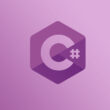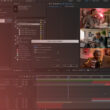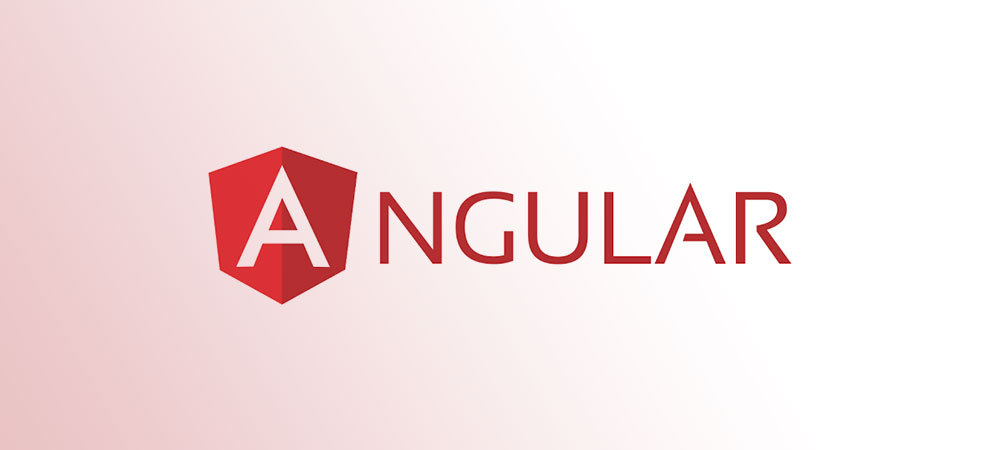20 Next.js Alternatives Worth Considering

Imagine crafting a masterpiece, brush stroke by brush stroke, but on the web. That’s what we do with Next.js, right? It’s a game-changer, allowing us to paint our visions into reality on the digital canvas. But, what if the brush doesn’t fit the art you’re envisioning? That’s where Next.js alternatives march into the spotlight.
The web’s like a box of chocolates; there are flavors you haven’t even dreamed of. As we dive into this rich world of JavaScript frameworks and static site generators, you’ll discover new tools to make your site not just functional but fabulously fast!
By the end of this read, you’ll have unlocked a treasure chest of options.
Expect to sail through the waves of Gatsby.js, wander through the fields of Nuxt.js, and maybe even find a new home in VuePress. These aren’t just names; they are your new allies in the quest for the perfect web experience.
So strap in. Prepare to level up your front-end game. It’s not just about alternatives; it’s about finding your next digital adventure.
Next.js alternatives
| Alternative | Key Feature | Primary Use Case | Language/Framework | Performance |
|---|---|---|---|---|
| Gatsby | Pre-configured SEO, Plugins | Static sites with rich data sources | React | Fast page loads |
| Vue.js | Reactive components | Single-page applications, Easy integration | Vue.js | Flexible, performant |
| Sapper | Server-side rendering | Svelte applications with SSR | Svelte | Fast interaction |
| Angular | Enterprise-level robustness | Large-scale applications | TypeScript/Angular | Scalable & structured |
| Nuxt.js | Automatic code splitting | Server-side rendered Vue.js apps | Vue.js | Quick and responsive |
| Gridsome | GraphQL data layer | Vue.js JAMstack sites | Vue.js | Enhanced performance |
| 11ty (Eleventy) | Minimalist setup | Simple static sites | JavaScript | Fast, simple builds |
| Stencil | Reusable components | Web components across frameworks | TypeScript | Lightweight |
| Quasar | Cross-platform development | Single codebase for SPA, SSR, Mobile, Desktop | Vue.js | Efficient and flexible |
| Ember.js | Strong routing | Ambitious web applications | JavaScript | Reliable |
| Svelte | No virtual DOM | High-performance apps with less code | Svelte | Reactive, fast UI |
| Hugo | Speed | Quick build-out for content sites | Go | Very fast builds |
| Aurelia | Clean code | Customizable web apps | JavaScript | Easy to read & maintain |
| Razzle | No config needed | Apps with SSR without framework restrictions | JavaScript | Versatile |
| Vite | Hot module replacement | Front-end tool with fast build pipeline | JavaScript | Extremely fast HMR |
| Meteor | Full-stack capabilities | Real-time apps on web and mobile | JavaScript | Real-time sync |
| Preact | Small footprint | Performance-driven projects, mobile apps | Preact (React-like) | Lightweight |
| KeystoneJS | Customizable schemas | Custom backends and CMS | JavaScript/Node.js | Flexible |
| Backbone.js | Structured JS apps | Organized, data-focused applications | JavaScript | Lightweight |
| Snowpack | Fast rebuilds | Modern web development | JavaScript | No bundling required |
Gatsby
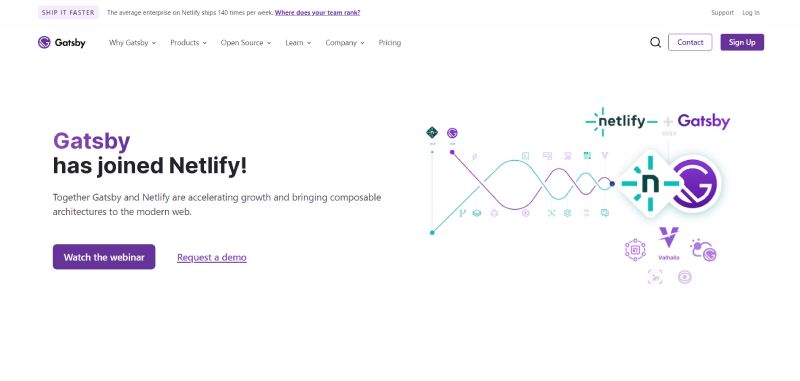
A React-based maestro, Gatsby transforms the way sites come to life by hooking into a rich set of data sources. Picture this: a web that’s blazing fast, where your creations go live almost before you hit ‘publish’. That’s Gatsby for you. Inside its engine, it’s got GraphQL superpowers, making data dancing across your pages a breeze.
Best Features:
- Pre-configured with powerful SEO.
- Lightning-fast page loads with pre-rendered HTML and automatic code splitting.
- Incredible plugin ecosystem.
What we like about it: It’s a stand-out for loading crazy fast and meshing so well with a variety of sources, making it a go-go for those SEO-driven projects.
Vue.js
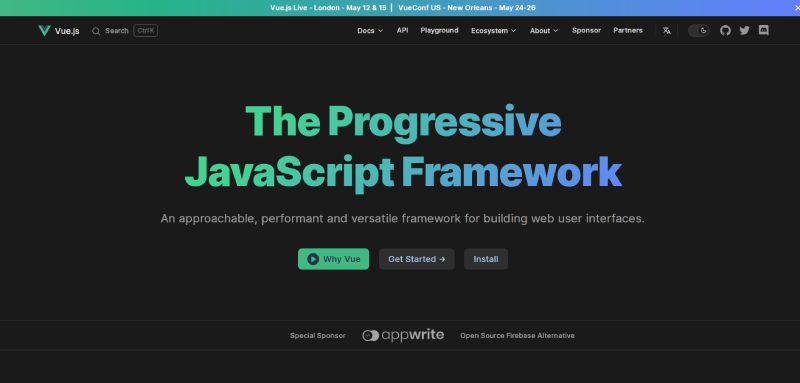
Like a breath of fresh air, Vue.js is that approachable buddy who’s also a powerhouse behind the scenes. Simplicity paired with flexibility, Vue.js is all about building slick, reactive single-page apps without the brain-strain. Its core library focuses on the view layer, making it tasty for integration with other projects and libraries.
Best Features:
- Reactive components that offer a simple and flexible API.
- Seamless transition for developers who’ve cut their teeth on other frameworks.
- Ecosystem includes routing, state management, and build tooling.
What we like about it: It’s the ease of integration that steals the show. Vue.js jumps into your workflow like it was always meant to be there.
Sapper
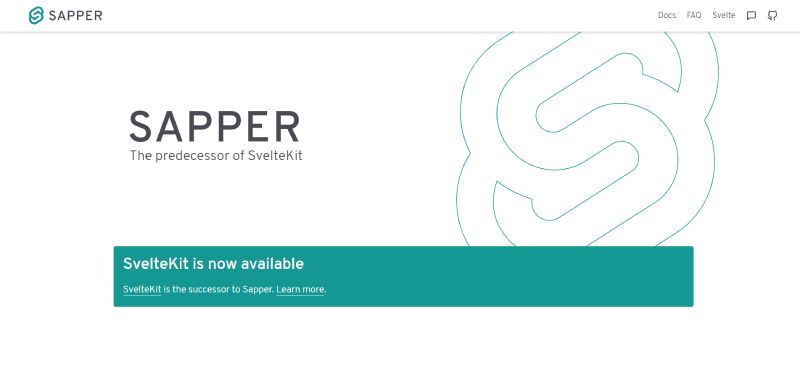
Cruise into the Svelte ecosystem with Sapper, a framework that takes all the brilliance of Svelte and dials it up for app building. It’s like Svelte’s outgoing cousin, optimizing for an even smoother ride from development to go-live.
Best Features:
- Enjoyable developer experience with Svelte’s simplified syntax.
- Server-side rendering right out of the box.
- Automatic code splitting for optimal page performance.
What we like about it: Server-side rendering, baby. It means your sites come out quick and interact even quicker.
Angular
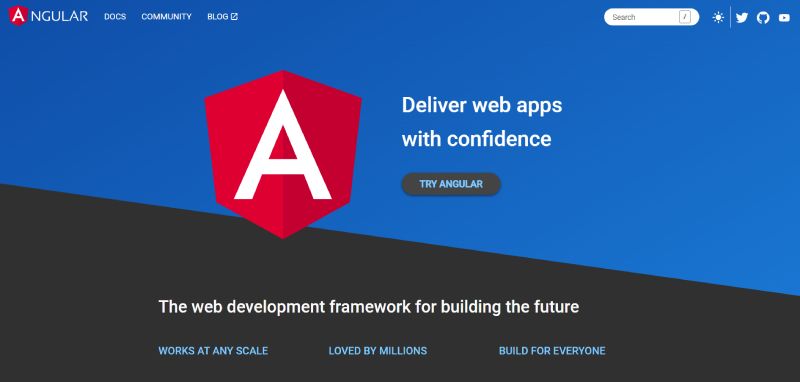
Angular – a household name that’s been around the block and back. If there’s a weighty project with high stakes on the horizon, Angular’s your trusty companion. It’s built with TypeScript, so you can bet your code will be neat and tidy. And with a community of die-hard fans, you’re in good company.
Best Features:
- Robust framework for building scalable applications.
- High-performance with real-time synchronization.
- Mature ecosystem complete with development tools.
What we like about it: Scalability is its middle name. Angular keeps everything organized, no matter how colossal the project scales.
Nuxt.js
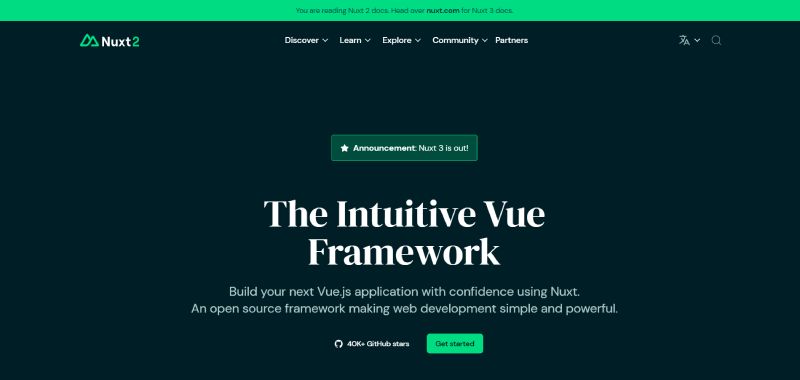
For the Vue.js crowd crying out for server-side rendering, Nuxt.js answers the call. Picture yourself crafting applications that are a treat for the eyes – that’s the Nuxt.js magic. It provides SSR, routing, and other familiar Vue.js melodics with extra muscle for your app to flex.
Best Features:
- Automatic code splitting and server-side rendering.
- Powerful module architecture and easy configuration.
- Strong conventions that boost productivity.
What we like about it: With automatic code splitting, each page only loads the JavaScript needed, making your site a lightning bolt.
Gridsome
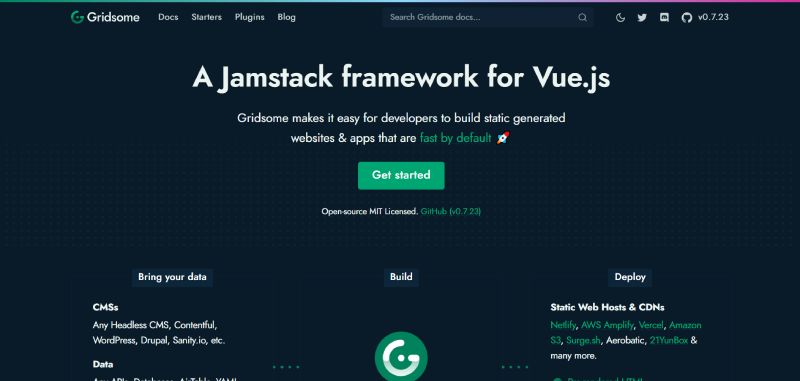
Gridsome is to Vue.js what Gatsby is to React. A static site generation darling, it merges Vue with GraphQL and a suite of top-notch developer delights. It’s striking the perfect chord for devs digging data-driven JAMstack websites that are built to impress.
Best Features:
- GraphQL data layer for a unified data handling experience.
- Plugins for popular headless CMS solutions.
- Image processing baked in to make visuals pop.
What we like about it: Gridsome makes your site feel like it’s on steroids, without compromising a bit of beauty.
11ty
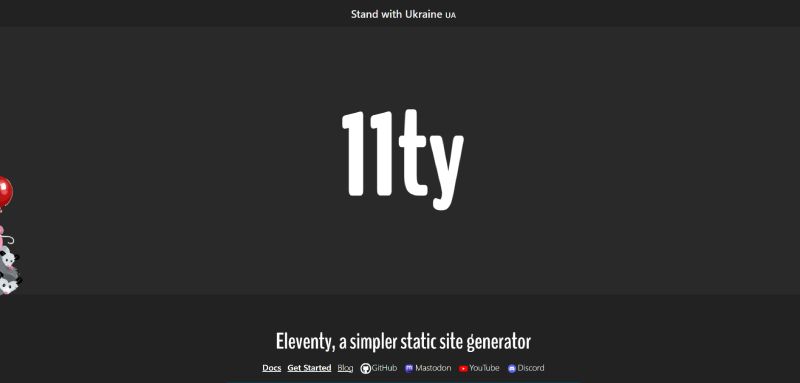
Known affectionately as Eleventy, this simple static site generator is waving a flag for simplicity without skimping on performance. Its zero-client-side JavaScript approach speaks volumes to devs craving a back-to-basics vibe while still creating web magic.
Best Features:
- Minimalistic setup that’s straightforward to grasp.
- Works with multiple template languages for ultimate flexibility.
- Fast build times for, well, faster everything.
What we like about it: Its minimalist spirit. It’s like tidying your workspace to only the essential tools.
Stencil
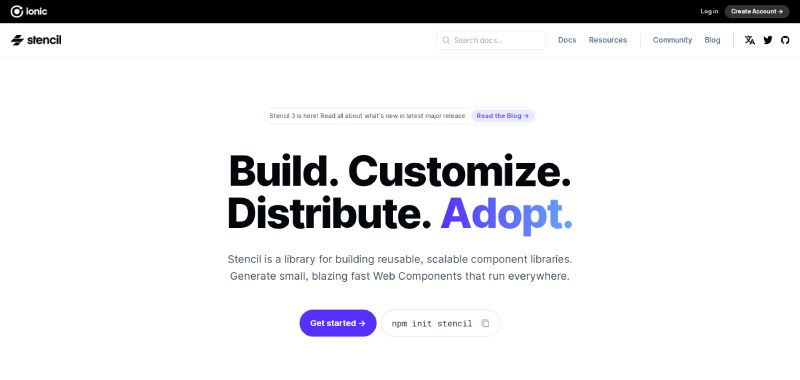
Rev up your components with Stencil, the tool that has one foot in the future with its web components that run everywhere. Think of it as the locksmith of web standards, opening doors to smooth, sturdy front-ends that scale without the sweat.
Best Features:
- Create reusable components that work across frameworks.
- Optimized for performance with lazy loading.
- TypeScript support from the ground up.
What we like about it: Stencil is the champ of creating web components that play nice across platforms. One tool, all the solutions.
Quasar

Whisk your projects to any platform with Quasar. It’s a cross-platform darling built on Vue.js that’s keen on delivering your vision from a single codebase. Talk desktop, mobile, spa, SSR, you name it – Quasar has its tickets ready.
Best Features:
- Build for all platforms — SPA, SSR, Mobile, Desktop — with a single Vue.js codebase.
- Extensive component library for faster UI development.
- Responsive design out of the box with Material Design support.
What we like about it: Multi-platform build flexibility. Write once, and run it wherever you want – efficient to the core.
Ember.js
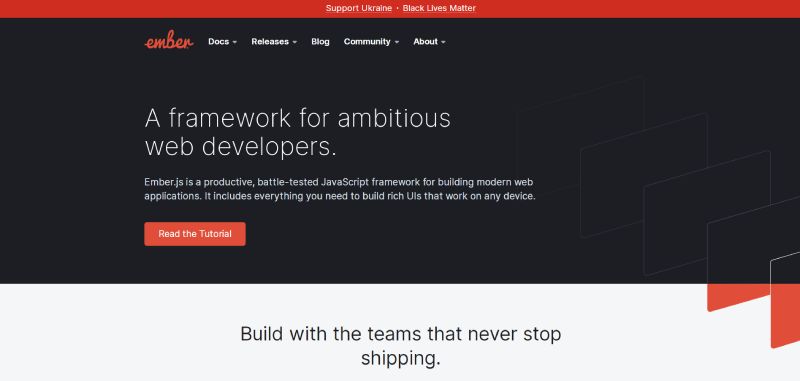
Ember.js is old school cool, a framework that’s been whispering sweet nothings to devs for years, helping build ambitious web applications. It wraps its arms around conventions and provides everything you need to build rich, complex web UIs.
Best Features:
- Convention over configuration mindset that accelerates development.
- Built-in CLI to automate routine tasks and boost efficiency.
- Robust routing design for ambitious application architectures.
What we like about it: The routing speaks to my soul. Ember makes managing URLs and user flow feel like a walk in the park.
Svelte
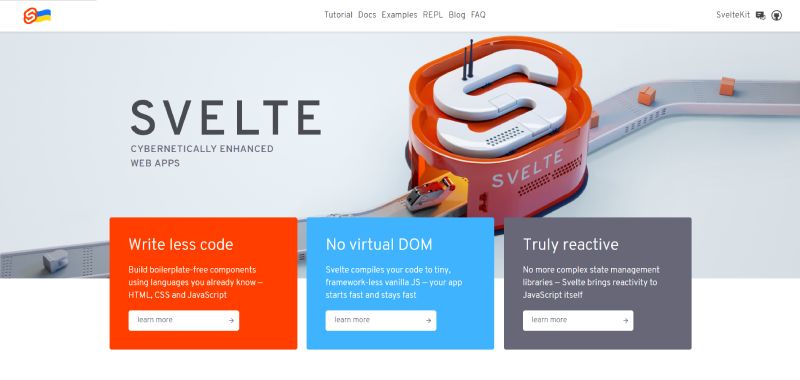
Breaking away from the mold, Svelte skips the virtual DOM altogether, aiming for simplicity and performance that are hard to beat. It’s compiling your app to minimal, surgical code to hit that sweet spot of near-instant load times.
Best Features:
- Compiler-centric design resulting in smaller bundles and faster runtime.
- Less code to write, with a reactive system that feels intuitive.
- No virtual DOM means direct updates for slick performance.
What we like about it: It feels like web development with cheat codes. You write less, do more, and the app reacts like it’s reading your mind.
Hugo
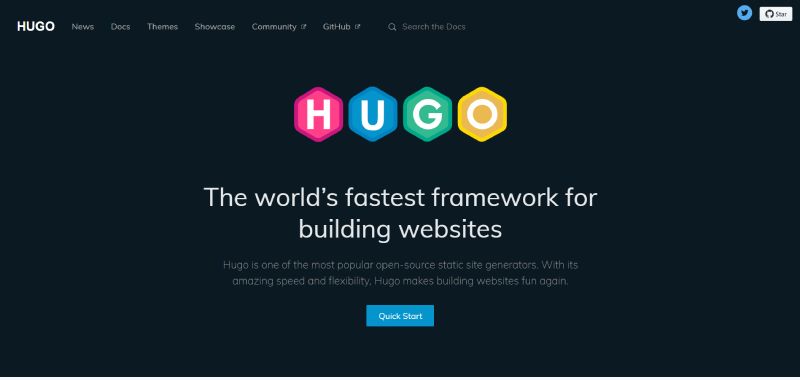
Hugo’s speed is legendary, a static site generator that’s leaving others in the dust. It runs your sites like they’re spring-loaded while keeping the learning curve nice and friendly. Power through blogs, portfolios, and docs at warp speed.
Best Features:
- Breakneck build speeds for getting your content out there, pronto.
- Multilingual functionality straight out of the box.
- Vast template library and content management flexibility.
What we like about it: We’re talking milliseconds to build your site – it’s the Usain Bolt of static site generators.
Aurelia
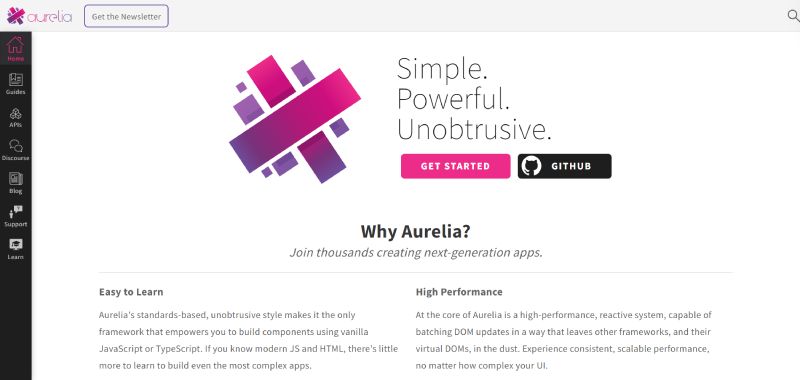
Aurelia does modern web dev with an old soul’s wisdom. It’s a collection of libraries that help you churn out everything from basic web pages to complex apps, and its focus on clean code just feels right.
Best Features:
- Unusually clean and unobtrusive code that reads almost like plain English.
- Adaptive binding system that syncs UI and data models seamlessly.
- Robust routing and composition for complex app structures.
What we like about it: The code’s readability is a killer feature. It’s like writing a love letter to your future self.
Razzle
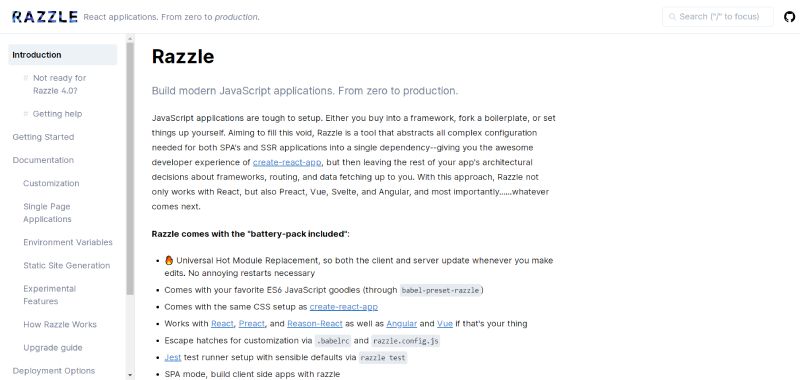
Don’t be fooled by Razzle’s playful name; it’s a serious contender when you need to jazz up your app without locking into a framework. It plays the background, letting you stand in the spotlight with the tools you adore, serving up SSR sweetness for React, Vue, Angular, and more.
Best Features:
- Zero-config setup aimed at productivity.
- Framework-agnostic – choose your favorite without hassle.
- Deep customization with just a razzle-dazzle of config.
What we like about it: Gotta love the no-framework-strings-attached vibe. It’s like free-climbing, but for web dev.
Vite
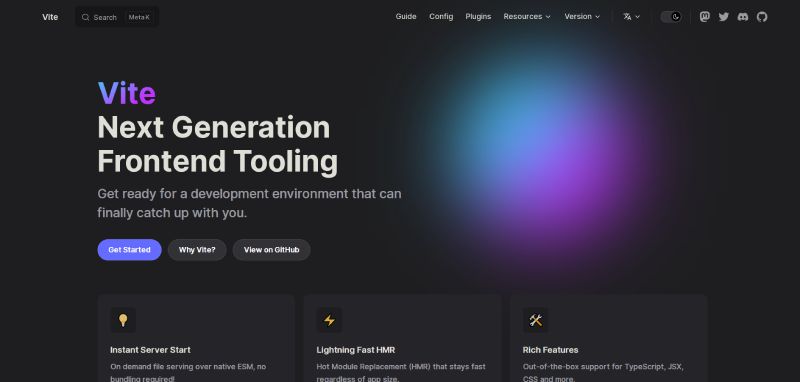
Energizing the dev process, Vite is a next-gen front-end build tool that harnesses native ES module imports during development. It stitches together the best practices from the get-go and redefines ‘swift’ in your build pipeline.
Best Features:
- Hot module replacement that practically reads your mind.
- Lightning-fast cold server start and near-instant hot updates.
- Broad framework support including Vue, React, and Svelte.
What we like about it: The speed, oh, the speed! It’s like swapping a go-kart for a rocket mid-race.
Meteor
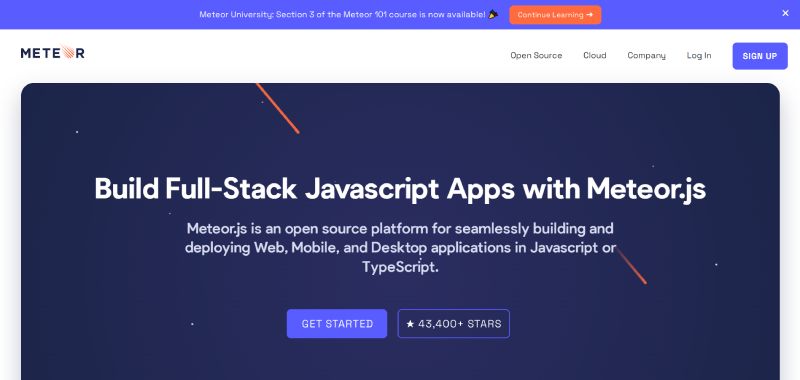
A full-stack platform in its own league, Meteor wraps up your back-end and front-end needs in one neat package. From prototyping to production, it’s got the muscle to handle data on the wire and a passionate community behind it.
Best Features:
- All-in-one platform for web, mobile, and desktop.
- Real-time data syncing between clients and server.
- Rich ecosystem of packages for quick feature addition.
What we like about it: Real-time all the way. It lets you build those responsive, engaging user experiences that keep folks coming back.
Preact
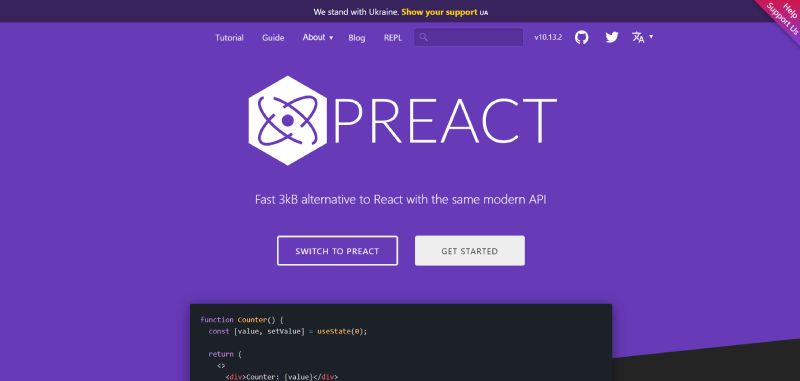
Preact is like React’s little sibling, smaller in size but with the same familiar moves. It’s cutting down the fluff and zipping through tasks with less overhead. When performance budgets are tight, Preact wiggles in perfectly.
Best Features:
- Tiny footprint for a faster-than-fast performance.
- Drop-in replacement for React with familiar APIs.
- Rich ecosystem with support for a majority of React libraries.
What we like about it: Teeny tiny size but just as mighty as the big guys – it’s easy to love for mobile and performance-conscious projects.
KeystoneJS
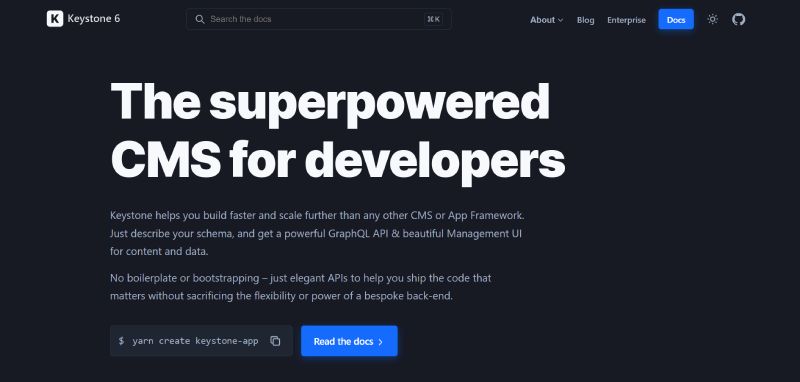
KeystoneJS kicks off our list with a sleek headless CMS under its belt, fusing GraphQL’s smarts with the flexibility of a customizable backend. It’s all about giving you the reins, whether you’re crafting a blog, a full-blown e-commerce site, or anything in between.
Best Features:
- Customizable content schemas with an intuitive GraphQL API.
- Built-in authentication and session management.
- Versatile backend setup using Node.js.
What we like about it: Customization is king here. Mold it to your project’s exact shape with ease.
Backbone.js

A veteran on the scene, Backbone.js is all about giving structure to your JavaScript-heavy applications. It’s standing the test of time, enabling you to keep your data logic and display logic neatly side by side, all while being lightweight.
Best Features:
- Straightforward approach for organizing JS apps.
- Minimalist library that plays well with others.
- RESTful JSON interface for seamless server sync.
What we like about it: It’s a minimalist at heart, bringing order to potentially chaotic code without suffocating it.
Snowpack

To cap it off, there’s Snowpack, the modern build tool that’s rethinking how we build web applications. It’s leveraging native browser features to serve up modules only when they’re changed, cutting down on build times and streamlining the whole development process.
Best Features:
- Utilizes native ES modules for a fresh approach to building.
- Lightning-fast rebuilds with no waiting on bundling.
- Out-of-the-box support for TypeScript, JSX, CSS Modules, and more.
What we like about it: Rebuild times are seriously slick, making those tweak-test-repeat cycles a walk in the park.
FAQ on Next.js alternatives
Why Search for Next.js Alternatives?
Let’s face it, tools gotta fit the project. Next.js is slick for sure. But sometimes, you’re after something different. Maybe you want simpler static site generation, or you’re cozying up to Vue instead of React. Flexibility, that’s the key.
What Can I Use Instead of Next.js for Static Site Generation?
Hugo and Jekyll jump out. They’re like ninjas, zippy and efficient for static site building, perfect for those lightning-fast, SEO-friendly sites. Also, peek at Eleventy – it’s minimal but packs a punch in simplicity.
Is There a Vue.js Equivalent to Next.js?
Oh, you bet! Meet Nuxt.js, the doppelganger of Next.js but in the Vue universe. It’s the full package with SSR, SSG, and all those acronyms we love. Seriously, it’s like they’re siblings.
Are There Any Full-stack Alternatives to Next.js?
Look at RedwoodJS; it’s plowing through the full-stack field. It merges the front and back end with the JAMstack philosophy. And, if you’re feeling experimental, Remix might just remix your entire web dev flow.
How Does Gatsby.js Compare as a Next.js Alternative?
Gatsby.js is all about the static site revolution. It’s a React-based generator, but it’s supercharged with GraphQL magic. Think super SEO, phenomenal performance, and it hooks up with a headless CMS like they’re old pals.
Can Angular Universal Serve as an Alternative to Next.js?
Angular enthusiasts, rejoice! Angular Universal is your ticket for SSR with Angular. It’s like swapping a sports car for an SUV – different ride, same destination: a performance-driven web app.
What’s the Best Lightweight Alternative to Next.js?
Eleventy’s your lightweight champion. It swings at the bloat of other frameworks and just sticks to the basics. When you don’t need all the bells and whistles, Eleventy answers the call.
What Are Good Next.js Alternatives for WordPress Users?
Say hello to Frontity. It speaks WordPress fluently and marries it with React, offering a head-turning solution for WordPress themes. And don’t overlook Gatsby.js; it’s also brilliant for crafting modern WordPress experiences.
Is Sapper a Viable Next.js Alternative for Svelte Users?
Svelte fans, Sapper’s got you covered. It’s the SSR and SSG toolkit for Svelte – like Next.js is to React, Sapper is to Svelte. It’s building a rep for being easy to use and lightning-fast.
Are There Any Enterprise-level Alternatives to Next.js?
For the big leagues, enterprise devs often swing towards Angular Universal for its robust features and scalability. If your organization is settled into the Angular ecosystem, it might just be your best contender.
Ending thoughts
And there we have it, a whole palette of Next.js alternatives to splash across the canvas of web creation. From the mighty Gatsby.js weaving through data with GraphQL, to the Vue kingdom’s very own Nuxt.js, it’s clear – choice is everything.
It’s a wrap! Explored we have, the territories far beyond the Next.js realm. Whether dipping toes into the waters of static site generation with Jekyll or embracing the full-stack power of RedwoodJS, new tools await to fire up the engines of innovation.
Remember, it’s not just about picking different tools; it’s about matching the vibe of the project. With these nuggets of wisdom, the road ahead is bright for crafting those wicked-fast, user-friendly sites that just feel right.
So, gear up and get ready to embark on this journey. The right fit is out there, and it’s time to make those bold moves. Let the adventure begin!
If you liked this article about Next.js alternatives, you should check out this article about Hadoop alternatives.
There are also similar articles discussing Bootstrap alternatives, React alternatives, Java alternatives, and JavaScript alternatives.
And let’s not forget about articles on GraphQL alternatives, jQuery alternatives, Django alternatives, and Python alternatives.
- How To Learn Data Science Online - May 2, 2024
- C# in the Modern World: What is C# Used For? - May 2, 2024
- Creating Stunning Visual Effects with Apps Like Adobe After Effects - May 1, 2024


